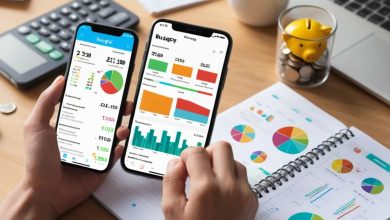Printable Budget Templates to Track Every Dollar Spent
Tracking every dollar you earn and spend can transform your financial life, turning vague money worries into clear action steps. Printable budget templates are an excellent way to gain that clarity because they let you physically record each transaction, spot patterns, and adjust your plan in real time. In this article, you will discover the benefits of meticulous expense tracking, explore various printable templates—monthly planners, weekly logs, envelope systems, and more—and learn how to use them effectively. By the end, you’ll have a set of tools and strategies to ensure every dollar has a name, helping you meet your financial goals without relying on apps or digital trackers.
Why Tracking Every Dollar Matters
Benefits of Detailed Budgeting
When you document each expense—whether it’s a $2 coffee or a $200 car repair—you uncover spending leaks that can drain your savings over time. Detailed budgeting:
-
Reveals small, recurring expenses (subscriptions, daily snacks) that add up
-
Provides accountability, making it harder to overspend on impulse purchases
-
Aligns your spending with priorities, such as building an emergency fund or paying down debt
-
Enhances flexibility: if one category runs over, you can adjust another immediately
By assigning every dollar a purpose, you prevent aimless spending and make conscious decisions about where to allocate your resources.
Printable vs. Digital Trackers: Pros and Cons
Printable Templates
-
Pros
-
No internet or device needed; always accessible
-
Tangible writing reinforces memory and commitment
-
Full privacy: your financial details stay on paper
-
Unlimited customization: add categories, notes, doodles as needed
-
-
Cons
-
Manual entry can be time-consuming
-
No automatic calculations or alerts
-
Harder to maintain historical records unless you archive diligently
-
Digital Tools
-
Pros
-
Automatic transaction import from bank accounts
-
Real-time notifications and reminders for bills or overspending
-
Built-in charts and analytics for spending trends
-
Sync across multiple devices for instant data updates
-
-
Cons
-
Requires internet access and device reliability
-
Potential data security concerns if credentials are compromised
-
May involve subscription fees for premium features
-
Less tangible—you may feel less connected to handwritten numbers
-
Choosing between printable and digital depends on your personal style: if you find writing things down more engaging and value privacy, printable templates offer unmatched control.
Types of Printable Budget Templates
Monthly Budget Planners
A monthly planner breaks your income and expenses into a single sheet, providing a bird’s-eye view:
-
Income Section: List all sources—salary, freelance work, side gigs
-
Fixed Expenses: Rent or mortgage, utilities, insurance, loan payments
-
Variable Expenses: Groceries, gas, dining out, entertainment (allocate a realistic amount)
-
Savings and Debt Goals: Emergency fund, retirement contributions, extra debt payments
-
Remaining Balance: Income minus all expenses and savings; should equal zero if you’re using a zero-based approach
Use a minimalist design with clear columns and ample writing space. At month’s end, note variances between budgeted and actual figures to identify areas needing adjustment.
Weekly Expense Trackers
For more granular oversight, a weekly log captures every transaction:
-
Daily Spending Log: Date, description (e.g., “coffee,” “Uber ride”), amount spent
-
Category Tags: Assign each entry a category—Food, Transport, Personal, etc.—to track where money flows
-
Weekly Totals: Sum each category at the end of the week and compare with your monthly budget targets
-
Notes Section: Record miscellaneous observations (“unexpected medical copay,” “gift for friend”) to understand spending spikes
Weekly trackers help you catch overspending early. If by Wednesday you’ve already spent $80 on dining out against a $200 monthly budget, you can adjust meal planning for the remaining days.
Envelope-Style Spending Worksheets
Inspired by the envelope method, this worksheet allocates cash to specific categories:
-
Envelope Name and Starting Balance: Write “Groceries – $400,” “Entertainment – $100,” etc.
-
Transaction Columns: Record date, description, and amount deducted from the envelope
-
Running Balance: Subtract each expense from the starting balance to track remaining funds
-
End-of-Envelope Balance: Should be zero or a positive surplus (indicating under budget)
By limiting spending to the cash in each “envelope,” you guard against overspending. If your “Dining Out” envelope runs dry, you know immediately to pivot to your “Cooking at Home” plan.
Bill Payment Calendars
A bill calendar ensures no due date slips through the cracks:
-
Monthly Grid: Space for each day of the month, large enough to jot down due dates
-
Bill Name and Amount: Write “Electricity – $75” on the appropriate date box
-
Payment Method Checkbox: Mark off “Paid” when the transaction is complete
-
Notes Section: Record confirmation numbers or autopay status
Hanging this calendar on your fridge or placing it by your workspace keeps upcoming payments visible. When you see a $150 rent payment due on the 1st, you can plan a transfer a few days earlier to avoid late fees.
Annual Budget Overview Sheets
An annual overview provides context for large or irregular expenses:
-
Monthly Income Projection: Estimate each month’s net income (salary plus side income)
-
Annual Fixed Costs: Tuition, insurance premiums, property taxes—expenses you know for the year
-
Savings Targets: Annual goals like $5,000 for emergency savings or a $2,000 vacation fund
-
Year-End Summary: Compare total income, total expenses, and total savings; note variances and adjust next year’s spreadsheet accordingly
Use this sheet to plan for big-ticket items—car registration fees in April, holiday gifts in December—and ensure you set aside funds monthly rather than scrambling at year’s end.
Tutorial: How to Use Printable Budget Templates Effectively
Step 1: Choose the Right Template for Your Needs
Assess how often you want to record expenses:
-
Monthly Planners suit those with predictable incomes (salaried employees) who want an overview.
-
Weekly Trackers benefit freelancers or hourly workers whose costs vary significantly each week.
-
Envelope Worksheets are ideal if you prefer using cash for certain categories.
-
Bill Calendars are essential if you juggle multiple recurring payments across various due dates.
-
Annual Overviews help if you have large, irregular financial obligations (tuition, taxes) that require long-term planning.
Step 2: Customize Categories and Fields
Generic templates may not fit every lifestyle. Tailor fields to reflect your reality:
-
Common Budget Categories: Housing, Utilities, Transportation, Food, Healthcare, Debt, Savings, Entertainment, Miscellaneous
-
Add or remove categories: If you don’t own a car, eliminate “Gas” and “Maintenance.”
-
Include personal nuances: “Pet Care,” “Streaming Services,” “Gym Membership”
-
Leave blank fields for unanticipated expenses so you can label them on the fly.
Step 3: Establish a Routine for Recording Expenses
Consistency turns budgeting into a habit:
-
Daily Check-Ins: Spend five minutes each evening to log that day’s receipts—coffee, groceries, transit fare.
-
Weekly Reviews: Every Sunday, total your expenses per category, compare against weekly budget targets, and note any deviations.
-
Visual Cues: Use colored pens or highlighters—green for under budget, red for over—to make overspending obvious.
Writing by hand engages your brain differently than typing. Physically crossing off or filling in amounts strengthens commitment and discourages casual overspend.
Step 4: Review and Reconcile at Month’s End
A thorough month-end reconciliation reveals actionable insights:
-
Summarize Each Category: Add up all “Food” expenses for the month and compare them against the $400 budget.
-
Identify Variances: If you spent $450 on groceries, note the $50 shortfall and consider whether to adjust next month’s allocation to $500.
-
Adjust Next Month’s Budget: Cut $20 from “Entertainment” if consistent overspending occurred there, or shift surplus from one category (e.g., “Transportation”) to cover the gap.
-
Archive Sheets: File your completed sheets in a binder or digital scan folder to track progress over time and spot long-term trends.
These regular adjustments ensure your budget evolves with your life—new job, rent increase, or shifting goals.
Where to Find High-Quality Free Printable Templates
Evaluating Template Sources
Not all printables are created equal. Look for:
-
Clean Design with Ample Writing Space: Crowded tables can discourage use.
-
Pre-Labeled Categories with Customizable Fields: Templates should cover common needs but allow personalization.
-
Clear Instructions or Sample Entries: Tutorials or examples help first-time budgeters understand how to fill out each section.
-
Compatibility with Standard Paper Sizes: Letter size (8.5 x 11 inches) in the U.S. or A4 internationally ensures easy printing without cropping.
Curated List of Top Free Templates
-
Minimalist Monthly Planner: One-page layout featuring income at the top, expense categories in the center, and savings/debt targets at the bottom.
-
Detailed Weekly Expense Log: Seven-day grid with columns for “Date,” “Description,” “Category,” and “Amount,” plus a “Notes” column.
-
Envelope Budget Packet: Multi-page PDF including individual envelope trackers for up to eight categories, plus a summary sheet to reconcile leftover balances.
-
Bill Payment Calendar Printable: A 12-month calendar grid with space for “Bill Name,” “Due Date,” and “Paid” checkbox in each date square.
-
Annual Financial Roadmap: Horizontal 12-column layout showing projected income, fixed costs, and savings goals for each month, ending with a “Year-End Summary” row.
Download these from reputable personal finance blogs or nonprofit financial education sites that prioritize user-friendly design.
Advanced Tips for Optimizing Your Printable Budget System
Incorporating Receipt Storage and Organization
Small receipts can easily go missing if you don’t have a system in place:
-
Accordion File or Envelopes: Label sections by week or category (Week 1, Groceries; Week 1, Gas; Week 2, Dining Out).
-
Monthly Binder: Keep completed budget sheets and stored receipts in clear plastic sleeves so you can flip through months at a glance.
-
Digital Backup: Photograph or scan receipts at the end of each week and store them in a folder labeled by date; this prevents losing important documents if paper is misplaced.
Having organized receipts helps you verify entries during reconciliation and serves as proof if discrepancies arise (bank errors or missing transactions).
Automating Reminders Without Digital Apps
Even if you avoid digital budgeting tools, you can still set reliable reminders:
-
Paper Planner or Wall Calendar: Write “Weekly Budget Review” every Sunday and circle each date there.
-
Phone Alarms: Use simple alarms labeled “Enter Expenses” or “Reconcile Budget” on designated days, without relying on an app.
-
Sticky Notes: Place a sticky note on your desk or fridge two days before bills are due, reminding you to set aside funds or schedule a transfer.
These low-tech reminders keep you on track without compromising the tactile nature of a printable budget system.
Creating a Physical “Budget Command Center”
Designate a single location in your home for all budgeting materials:
-
Clipboard or Bulletin Board: Pin or clip your current month’s budget sheet, weekly logs, and bill calendar where you see them often—near your home office or kitchen.
-
Desktop Organizer: Store pens, highlighters, envelope trackers, and receipt files in a small container or index card holder.
-
Visual Progress Indicators: Add a small dry-erase board for “This Month’s Savings Goal” and update it weekly with your progress.
A dedicated space signals that budgeting is a priority and makes it easy to update entries as you go about daily tasks.
Printable Budget Templates vs. Digital Budget Tools
Advantages of Printable Templates
-
No Internet or App Dependence: Always accessible—even during power outages or if your device fails.
-
Tangible Writing Reinforces Commitment: Manually crossing off expenses can feel more rewarding and memorable.
-
Complete Privacy: No risk of third-party data breaches; your financial details never leave your home.
-
Unlimited Customization: You can add doodles, color codes, or unconventional categories without constraints.
Advantages of Digital Tools
-
Automatic Transaction Import: Sync bank and credit card accounts to categorize expenses in real time.
-
Real-Time Tracking and Alerts: Receive notifications when bills are due or you approach budget limits.
-
Built-In Analytics: Generate spending reports, pie charts, and trend lines without manual calculation.
-
Multi-Device Sync: Access your budget from smartphone, tablet, or computer, updating on the go.
Which Is Right for You?
Printable is ideal if you want hands-on control, value privacy, and prefer a no-tech approach.
Digital is ideal if you seek convenience, automatic categorization, and robust financial analytics.
If you appreciate the tactile feel of pen on paper and don’t want to share financial data online, printable templates give you full ownership. If you need real-time updates and seamless integration with your bank, a digital tool might be more efficient.
Frequently Asked Questions
What Paper Size Works Best for Printable Budget Templates?
In the U.S., standard letter size (8.5 x 11 inches) is best. Internationally, A4 (8.27 x 11.69 inches) is more common. Both sizes fit most home and office printers without needing scaling or cropping.
How Often Should I Update My Printable Budget?
For accurate tracking, enter expenses daily or at least weekly. Reconciling at month’s end provides a complete performance review and informs adjustments for the next month.
Can I Customize Printable Templates to Reflect My Unique Categories?
Absolutely. Many templates include blank fields or allow you to delete default categories and add your own—such as “Pet Care,” “Streaming Services,” or “Home Improvement.” Use a pencil or erasable pen if you expect frequent category changes.
What if I Lose My Printed Pages or They Get Damaged?
Keep a digital backup by scanning or photographing each completed sheet weekly. Store images in a secure folder, organized by month and year. If you misplace a page, reprint a blank copy and fill in data from your backups.
Are There Budget Template Kits That Include Envelopes and Trackers?
Yes. Some printable “budget kits” combine monthly planners, weekly expense logs, envelope trackers, and bill calendars in a single downloadable PDF. These kits ensure consistent design across all budgeting pages, making it easier to integrate every aspect of your financial plan.
Conclusion
Printable budget templates offer a hands-on, privacy-focused way to track every dollar and gain full control of your finances. By choosing the right format—monthly planners, weekly logs, envelope systems, or bill calendars—you can tailor your approach to fit your income and spending habits. Establish a routine of daily or weekly entries, reconcile at month’s end, and store receipts systematically to catch overspending before it becomes unmanageable. Whether you create a physical “budget command center” or rely on simple paper and pen, these templates empower you to identify spending leaks, align dollars with priorities, and advance toward savings and debt-free goals. Adopt these tools today and experience the confidence that comes from knowing exactly where each dollar goes.
Published on: 4 de June de 2025








